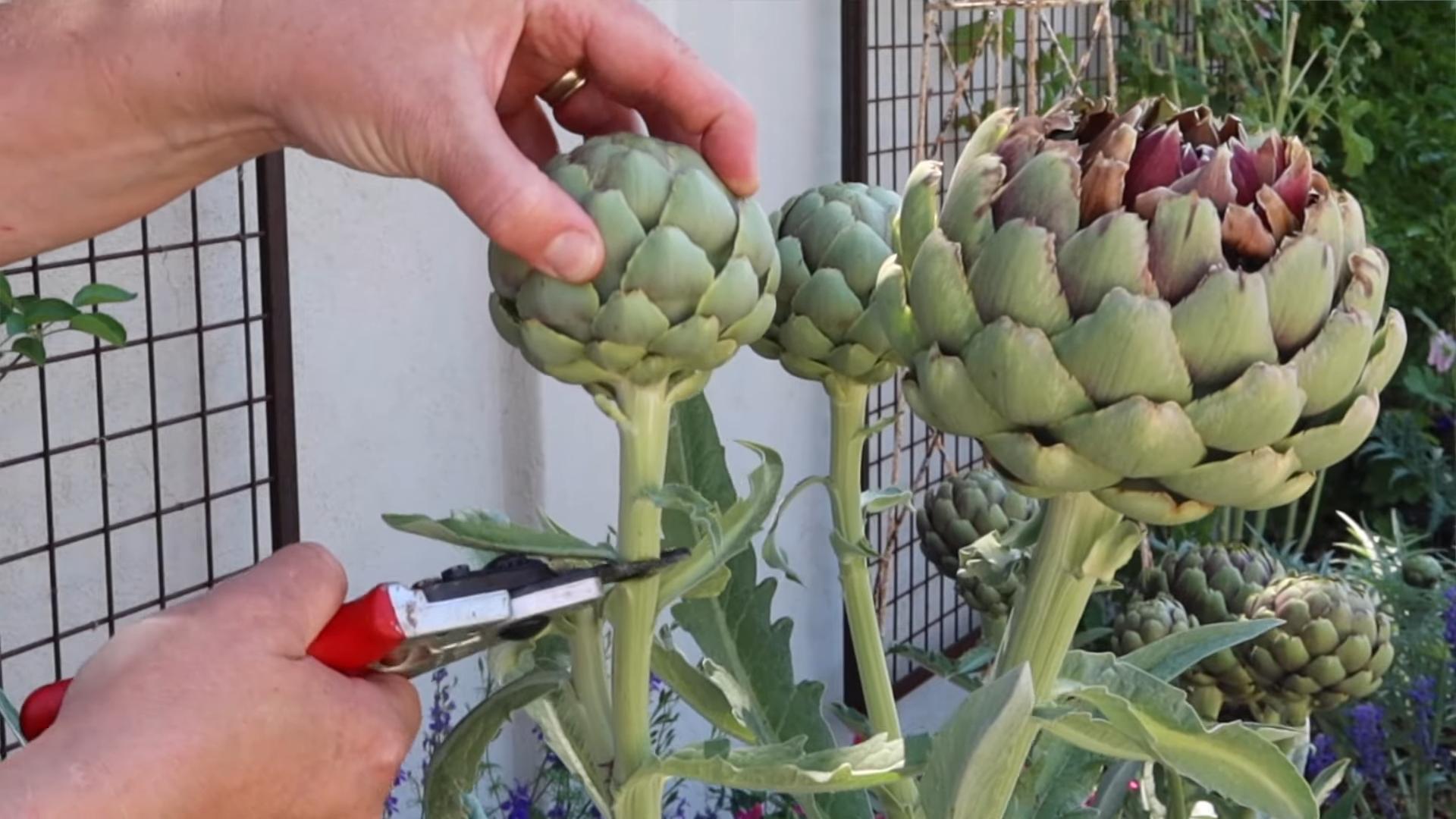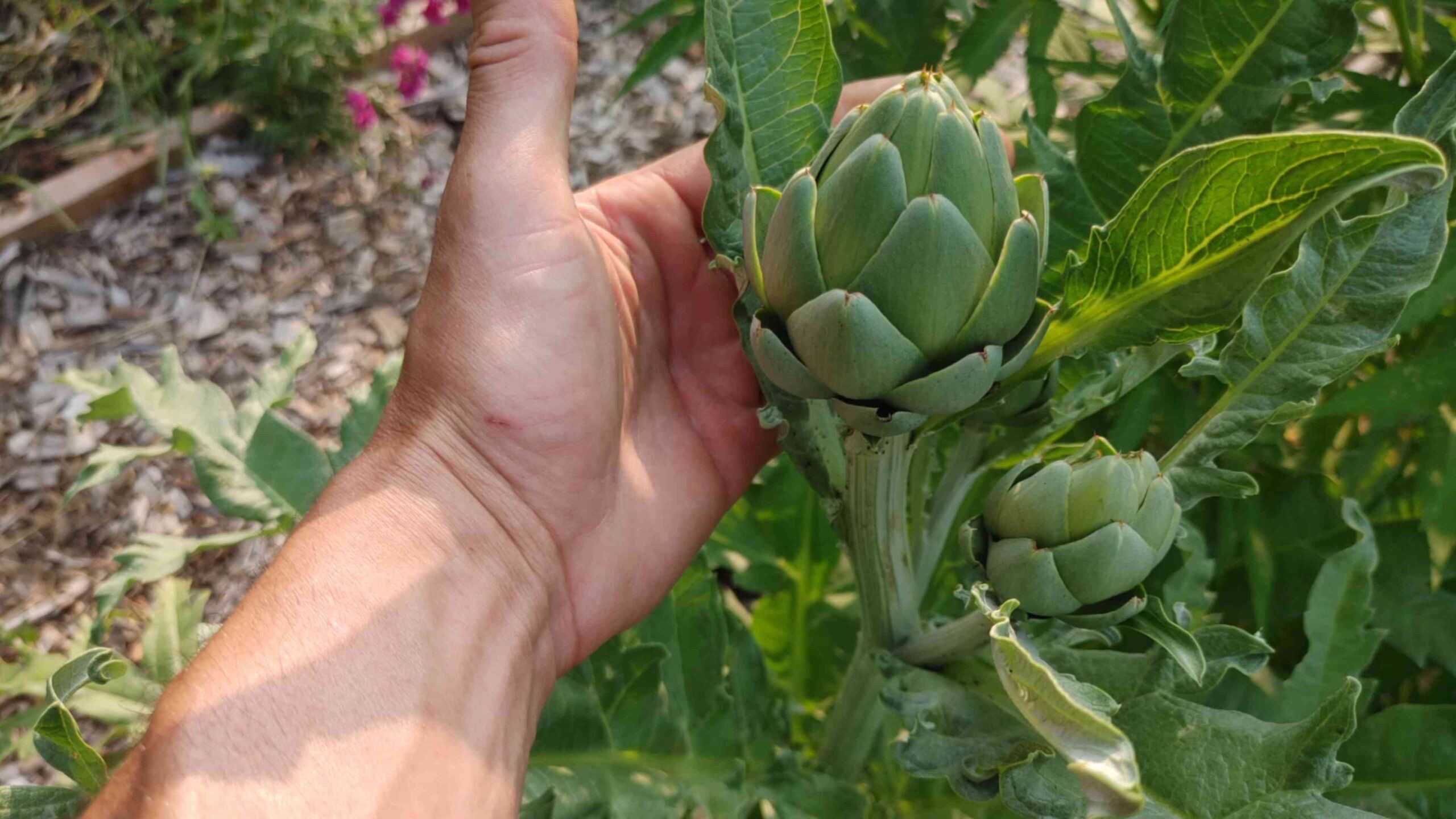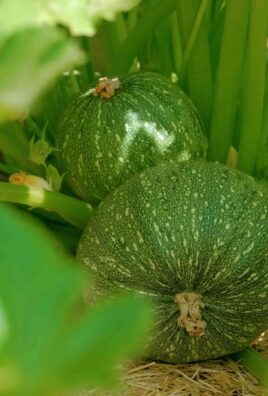Grow Artichokes at Home? Absolutely! Imagine stepping into your backyard and harvesting your very own spiky, delicious artichokes. It sounds like a gourmet dream, right? Well, it’s more achievable than you might think, and I’m here to show you how with some simple DIY tricks and hacks.
Artichokes, with their architectural beauty and unique flavor, have a rich history. Originating in the Mediterranean, they were prized by the ancient Greeks and Romans for their culinary and medicinal properties. For centuries, they’ve been a symbol of abundance and sophistication, gracing the tables of royalty and inspiring artists alike.
But why should you bother to grow artichokes at home? Well, store-bought artichokes can be pricey and sometimes lack that fresh, vibrant taste. Plus, there’s something incredibly rewarding about nurturing a plant from seedling to harvest, knowing you’ve created something delicious and beautiful with your own hands. In this article, I’ll share my favorite DIY tips and tricks to help you successfully cultivate these fascinating plants, even if you have limited space or gardening experience. Get ready to impress your friends and family with your homegrown artichoke creations!

Growing Artichokes: A DIY Guide to Bountiful Blooms and Delicious Hearts
Artichokes! Just the name conjures images of sunny Mediterranean fields and elegant dinners. And guess what? You don’t need a sprawling estate to enjoy these architectural beauties and their delectable hearts. I’m going to walk you through how to grow artichokes right in your own backyard (or even in containers!), so you can impress your friends and family with homegrown goodness.
Choosing Your Artichoke Variety
Before we get our hands dirty, let’s talk varieties. Not all artichokes are created equal, and choosing the right one for your climate is crucial.
* **’Green Globe’:** This is the classic, most widely available variety. It’s reliable, produces large, flavorful artichokes, and is relatively cold-hardy. This is a great choice for beginners.
* **’Violetta Precoce’:** If you’re looking for something a little different, this Italian heirloom variety boasts beautiful purple-tinged artichokes. It’s also known for its early production.
* **’Imperial Star’:** This variety is specifically bred for warmer climates and can even produce artichokes in its first year. It’s a good option if you have a shorter growing season.
* **’Big Heart’:** As the name suggests, this variety produces large, meaty artichokes with fewer prickly chokes.
Consider your local climate and growing season when making your choice. Check with your local nursery or online seed supplier for recommendations specific to your area.
Getting Started: From Seed or Transplant?
You have two main options for starting your artichoke journey: seeds or transplants.
* **Seeds:** Starting from seed is more economical, but it requires more patience. Artichokes started from seed may not produce in their first year, and you’ll need to start them indoors well before the last frost.
* **Transplants:** Buying transplants is the easier and faster route. You’ll get a head start on the growing season, and you’re more likely to harvest artichokes in the first year.
For this guide, I’ll focus on using transplants, as it’s the most common and beginner-friendly method.
Preparing the Soil: Artichokes Love Richness
Artichokes are heavy feeders, meaning they need nutrient-rich soil to thrive. Before planting, it’s essential to prepare the soil properly.
* **Sunlight:** Artichokes need at least 6-8 hours of direct sunlight per day. Choose a location in your garden that receives plenty of sunshine.
* **Soil Type:** Artichokes prefer well-drained, fertile soil with a slightly acidic to neutral pH (around 6.0-7.0).
* **Amendments:** Amend the soil with plenty of organic matter, such as compost, well-rotted manure, or leaf mold. This will improve drainage, fertility, and water retention. I usually dig in a generous amount – about a bucketful per plant.
* **Drainage:** Ensure the soil drains well. Artichokes don’t like soggy roots. If your soil is heavy clay, consider adding sand or perlite to improve drainage.
Planting Your Artichoke Transplants
Now for the fun part! Let’s get those artichokes in the ground.
1. **Dig the Hole:** Dig a hole that’s twice as wide and as deep as the transplant’s root ball.
2. **Amend the Hole:** Mix some compost into the soil you removed from the hole.
3. **Gently Remove the Transplant:** Carefully remove the artichoke transplant from its container, being careful not to damage the roots. Gently loosen any circling roots.
4. **Position the Transplant:** Place the transplant in the hole, ensuring that the top of the root ball is level with the surrounding soil.
5. **Backfill the Hole:** Backfill the hole with the amended soil, gently firming it around the plant.
6. **Water Thoroughly:** Water the newly planted artichoke thoroughly to settle the soil and help the roots establish.
7. **Mulch:** Apply a layer of mulch around the plant to help retain moisture, suppress weeds, and regulate soil temperature. I like to use straw or shredded bark.
8. **Spacing:** If you’re planting multiple artichokes, space them about 3-4 feet apart to allow for adequate growth.
Caring for Your Artichokes: Watering, Fertilizing, and Pruning
Once your artichokes are planted, they’ll need regular care to thrive.
Watering
* **Regular Watering:** Artichokes need consistent moisture, especially during dry periods. Water deeply and regularly, aiming to keep the soil consistently moist but not waterlogged.
* **Check the Soil:** Check the soil moisture regularly by sticking your finger into the soil. If the top inch feels dry, it’s time to water.
* **Avoid Overwatering:** Overwatering can lead to root rot, so be careful not to overdo it.
Fertilizing
* **Regular Feeding:** Artichokes are heavy feeders and benefit from regular fertilization.
* **Balanced Fertilizer:** Use a balanced fertilizer (e.g., 10-10-10) or a fertilizer specifically formulated for vegetables.
* **Fertilizing Schedule:** Fertilize every 4-6 weeks during the growing season, following the instructions on the fertilizer package.
* **Organic Options:** You can also use organic fertilizers, such as compost tea or fish emulsion.
Pruning
* **Remove Dead or Damaged Leaves:** Regularly remove any dead or damaged leaves to prevent disease and improve air circulation.
* **Cut Back After Harvest:** After harvesting the main artichokes, cut back the plant to encourage new growth and potentially a second harvest.
* **Overwintering:** In colder climates, you’ll need to protect your artichokes from frost. Cut back the plant to about 6 inches above the ground and cover it with a thick layer of mulch or straw. You can also dig up the plant and store it in a cool, dark place over the winter.
Dealing with Pests and Diseases
Artichokes are generally relatively pest-resistant, but they can be susceptible to a few problems.
* **Aphids:** These tiny pests can suck the sap from artichoke leaves, causing them to curl and distort. Control aphids with insecticidal soap or neem oil.
* **Slugs and Snails:** These slimy creatures can munch on artichoke leaves, especially young plants. Use slug and snail bait or handpick them off the plants.
* **Artichoke Plume Moth:** The larvae of this moth can bore into the artichoke buds, causing damage. Use pheromone traps to monitor for the moths and apply Bacillus thuringiensis (Bt) to control the larvae.
* **Root Rot:** This fungal disease can occur in poorly drained soil. Prevent root rot by ensuring good drainage and avoiding overwatering.
Harvesting Your Artichokes: The Moment of Truth
Harvesting artichokes is the most rewarding part of the process!
1. **Timing:** Harvest artichokes when the buds are still tight and firm, before the bracts (the outer leaves) begin to open. The size of the artichoke will vary depending on the variety, but generally, you’ll want to harvest them when they’re about 3-4 inches in diameter.
2. **Cutting:** Use a sharp knife to cut the artichoke stem about 2-3 inches below the bud.
3. **Side Shoots:** After harvesting the main artichoke, you can also harvest the smaller side shoots that develop along the stem. These are often more tender than the main artichoke.
4. **Enjoy!** Cook and enjoy your homegrown artichokes!
Cooking and Enjoying Your Artichokes
There are countless ways to enjoy artichokes. Here are a few ideas:
* **Steamed:** Steaming is a classic way to cook artichokes. Simply steam them until the bracts are tender and can be easily pulled off. Serve with melted butter or a dipping sauce.
* **Grilled:** Grilling artichokes gives them a smoky flavor. Cut them in half, brush with olive oil, and grill until tender.
* **Roasted:** Roasting artichokes brings out their sweetness. Cut them in half, drizzle with olive oil, and roast until tender.
* **Artichoke Hearts:** Artichoke hearts are a delicacy. You can buy them canned or jarred, or you can prepare them yourself by removing the outer bracts and the fuzzy choke.
Container Growing: Artichokes on the Patio
Don’t have a garden? No problem! You can grow artichokes in containers.
* **Choose a Large Container:** Select a large container, at least 24 inches in diameter and 24 inches deep.
* **Use a Well-Draining Potting Mix:** Use a high-quality potting mix that drains well.
* **Provide Plenty of Sunlight:** Place the container in a location that receives at least 6-8 hours of direct sunlight per day.
* **Water Regularly:** Water the container regularly, especially during dry periods.
* **

Conclusion
So, there you have it! Growing artichokes at home might seem daunting at first, but with a little patience, the right conditions, and this straightforward guide, you’ll be harvesting your own delicious, spiky treasures in no time. We’ve walked you through everything from selecting the right variety for your climate to nurturing your plants through their various stages of growth.
Why is this DIY trick a must-try? Because nothing beats the flavor of a freshly harvested, homegrown artichoke. The subtle sweetness and delicate texture are simply unmatched by anything you can find in a grocery store. Plus, you’ll have the satisfaction of knowing you nurtured these plants from tiny seedlings to mature, productive vegetables. Beyond the taste, growing your own artichokes is an incredibly rewarding experience, connecting you to the natural world and providing a sustainable source of food.
But the fun doesn’t stop there! Feel free to experiment with different varieties of artichokes to find your personal favorite. ‘Green Globe’ is a classic choice, but ‘Violetta’ offers a beautiful purple hue and a slightly sweeter flavor. You can also try different companion planting strategies to deter pests and improve soil health. Consider planting basil, rosemary, or thyme nearby, as these herbs are known to repel common artichoke pests.
And don’t forget about the various ways you can enjoy your homegrown artichokes! Steamed with a simple lemon-butter sauce is a classic, but you can also grill them, stuff them with breadcrumbs and cheese, or even add them to pasta dishes and salads. The possibilities are endless!
We wholeheartedly encourage you to give this DIY project a try. Growing artichokes at home is not only a rewarding experience but also a sustainable way to enjoy this delicious vegetable. Don’t be afraid to get your hands dirty and embrace the challenge.
Once you’ve harvested your first artichokes, we’d love to hear about your experience! Share your tips, tricks, and photos in the comments below. Let’s build a community of home gardeners who are passionate about growing their own food. Happy gardening!
Frequently Asked Questions (FAQ)
Q: What is the best climate for growing artichokes?
A: Artichokes thrive in mild climates with cool, moist summers and mild winters. They are perennial in USDA hardiness zones 7-10. In colder climates, you can still grow artichokes as annuals, starting them indoors early in the spring. The ideal temperature range for artichokes is between 50°F and 75°F (10°C and 24°C). They need a period of cool temperatures (below 50°F) to initiate bud formation, but they are susceptible to frost damage. If you live in an area with harsh winters, consider growing them in containers that can be moved indoors or providing adequate winter protection.
Q: How much space do artichoke plants need?
A: Artichoke plants can grow quite large, reaching up to 3-4 feet in height and width. Therefore, it’s essential to provide them with ample space to thrive. When planting artichokes in the ground, space them at least 4 feet apart. If you’re growing them in containers, choose a pot that is at least 24 inches in diameter. Proper spacing allows for adequate air circulation, which helps prevent fungal diseases, and ensures that each plant receives enough sunlight and nutrients.
Q: What type of soil is best for artichokes?
A: Artichokes prefer well-drained, fertile soil that is rich in organic matter. The ideal soil pH is between 6.5 and 7.0. Before planting, amend your soil with compost, aged manure, or other organic materials to improve its fertility and drainage. Artichokes are heavy feeders, so it’s also beneficial to incorporate a slow-release fertilizer into the soil at planting time. Avoid planting artichokes in heavy clay soil, as this can lead to root rot. If you have clay soil, consider growing them in raised beds or containers.
Q: How often should I water artichoke plants?
A: Artichokes need consistent moisture, especially during the growing season. Water deeply and regularly, ensuring that the soil remains consistently moist but not waterlogged. The frequency of watering will depend on your climate and soil type. In general, water artichokes 1-2 times per week, or more often during hot, dry weather. Avoid overhead watering, as this can promote fungal diseases. Instead, water at the base of the plant, using a soaker hose or drip irrigation system.
Q: How do I fertilize artichoke plants?
A: Artichokes are heavy feeders and benefit from regular fertilization. At planting time, incorporate a slow-release fertilizer into the soil. During the growing season, fertilize every 4-6 weeks with a balanced fertilizer or a fertilizer specifically formulated for vegetables. You can also supplement with organic fertilizers, such as compost tea or fish emulsion. Avoid over-fertilizing, as this can lead to excessive foliage growth at the expense of bud production.
Q: How do I protect artichoke plants from pests and diseases?
A: Artichokes are susceptible to several pests and diseases, including aphids, slugs, snails, and powdery mildew. To prevent pest and disease problems, practice good garden hygiene. Remove any dead or diseased leaves, and keep the area around the plants free of weeds and debris. Regularly inspect your plants for signs of pests or diseases, and take action promptly if you notice any problems. You can use organic pest control methods, such as insecticidal soap or neem oil, to control aphids and other pests. To prevent powdery mildew, ensure good air circulation around the plants and avoid overhead watering.
Q: When and how do I harvest artichokes?
A: Artichokes are typically ready to harvest in the spring or early summer, depending on your climate and the variety you’re growing. The buds are ready to harvest when they are still tight and firm, but the bracts (the outer leaves) have begun to open slightly. To harvest, use a sharp knife to cut the stem about 2-3 inches below the base of the bud. Wear gloves to protect your hands from the prickly bracts. Harvest artichokes regularly to encourage continued production.
Q: Can I grow artichokes in containers?
A: Yes, artichokes can be successfully grown in containers, especially in colder climates where they need to be moved indoors during the winter. Choose a large container that is at least 24 inches in diameter and has good drainage. Use a high-quality potting mix that is rich in organic matter. Water and fertilize regularly, and provide the plants with plenty of sunlight. Container-grown artichokes may not produce as many buds as those grown in the ground, but they can still provide a rewarding harvest.
Q: How do I overwinter artichoke plants in cold climates?
A: In colder climates, artichokes need to be protected from frost and freezing temperatures. Before the first frost, cut back the foliage to about 6 inches above the ground. Mulch heavily around the base of the plant with straw, leaves, or other organic materials. If you’re growing artichokes in containers, move them to a sheltered location, such as a garage or shed. Water sparingly during the winter, just enough to keep the soil from drying out completely. In the spring, after the last frost, remove the mulch and begin watering and fertilizing regularly.
Q: Are all parts of the artichoke plant edible?
A: While the most commonly eaten part of the artichoke is the bud, other parts of the plant are also edible. The stem, for example, can be peeled and cooked like asparagus. The heart of the artichoke, located at the base of the bud, is considered the most prized part. Even the leaves can be eaten, although they are quite fibrous and require some preparation. To eat the leaves, pull them off the bud and scrape the fleshy base between your teeth.





Leave a Comment